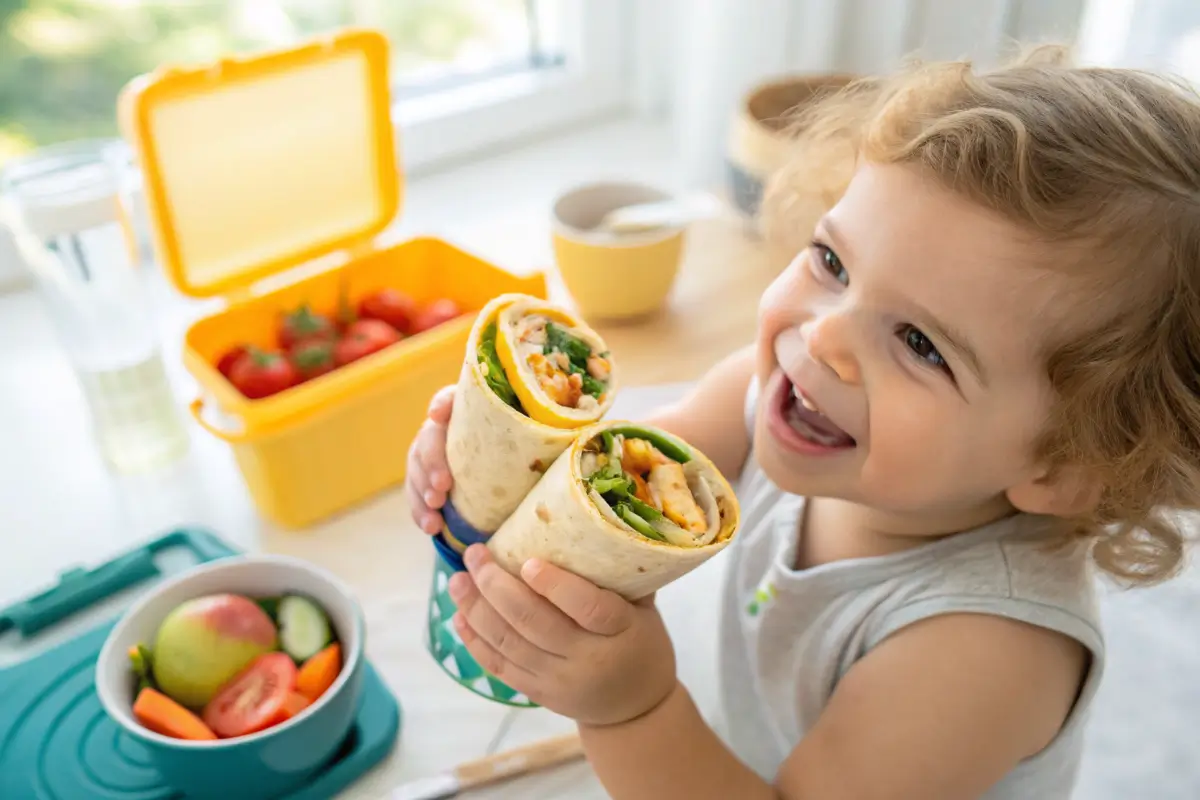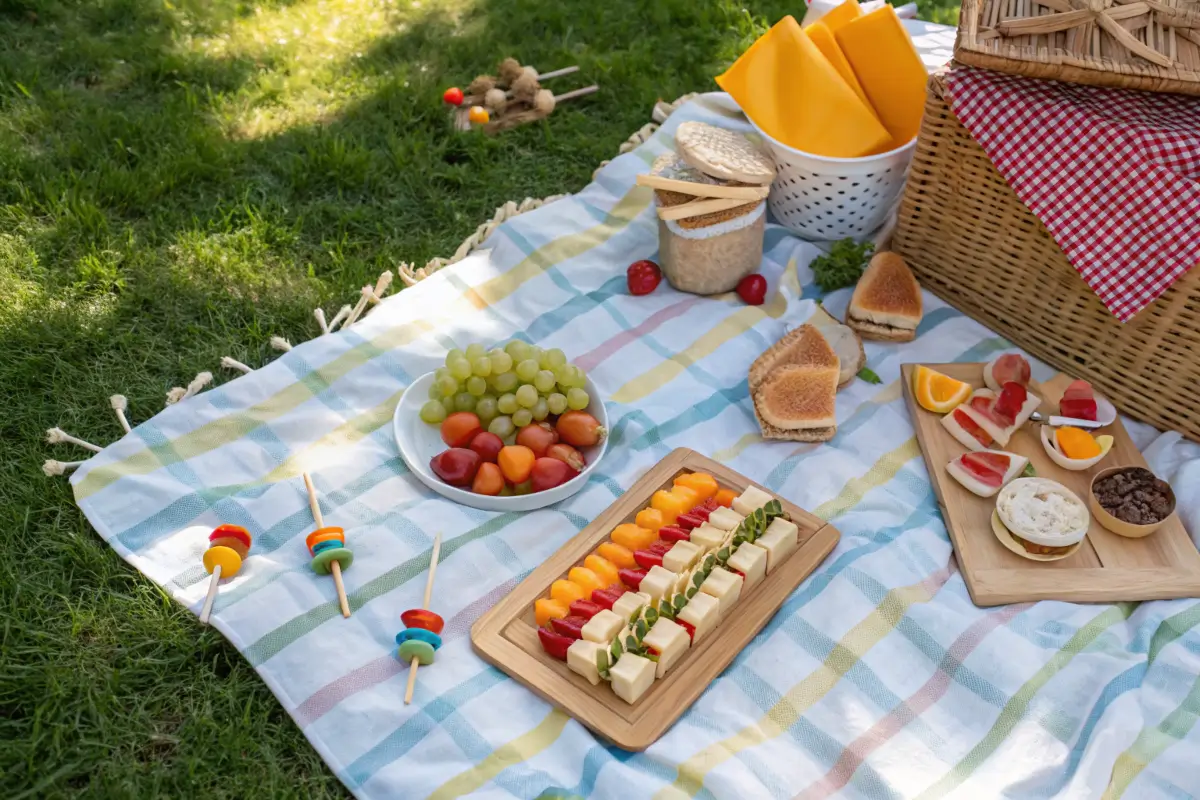When it comes to toddlers, every little detail matters, especially their meals. One of the most common questions parents ask is, “What is a good lunch time for toddlers?” Finding the right time for lunch can significantly impact a toddler’s mood, behavior, and overall health.
In this article, we’ll explore the importance of nutrition, the ideal timing for lunch, how to structure a toddler-friendly meal, and tackle common challenges parents face during lunch. By the end, you’ll have a comprehensive understanding of how to create a healthy and enjoyable lunch routine for your little one.
Understanding Toddler Nutrition and Meal Timing
Importance of Nutrition for Toddlers
Nutrition plays a crucial role in a toddler’s growth and development. During these formative years, toddlers require a balanced diet rich in essential nutrients. These nutrients support not only their physical growth but also their cognitive development. For instance, vitamins and minerals like calcium and iron are vital for building strong bones and supporting brain function.
Nutritional Needs of Toddlers
Toddlers typically need a variety of foods from all food groups. This includes fruits, vegetables, grains, proteins, and dairy. Each food group contributes to their overall health, helping them grow and thrive.
Impact of Nutrition on Growth and Development
Good nutrition can lead to better health outcomes, including a stronger immune system and improved energy levels. Conversely, poor nutrition can result in developmental delays and health issues.
Essential Vitamins and Minerals for Toddlers
Key vitamins such as A, C, and D, along with minerals like zinc and magnesium, are essential for toddlers. These nutrients help in everything from vision to immune function, making it crucial to include them in their meals.
Why Meal Timing Matters
Now, let’s talk about meal timing. You might wonder, “Why does the timing of lunch matter so much?” Well, it turns out that when toddlers eat can affect their mood and behavior throughout the day.
Effects of Meal Timing on Toddler Behavior
Eating at regular intervals helps maintain stable energy levels. If lunch is too late or too early, toddlers may become cranky or overly hungry, leading to meltdowns.
Connection Between Meal Timing and Sleep Patterns
Interestingly, meal timing can also influence sleep. A well-timed lunch can help ensure that toddlers are not too hungry or too full at nap time, promoting better sleep quality.
The Role of Routine in Toddler Meals
Establishing a consistent lunch routine can provide a sense of security for toddlers. They thrive on predictability, and knowing when to expect meals can help them feel more settled.
Cultural Influences on Meal Timing
Lastly, let’s not forget about cultural influences. Different cultures have varying lunch times, which can shape a toddler’s eating habits.
Variations in Lunch Times Across Cultures
In some cultures, lunch is served earlier, while in others, it may be later in the day. Understanding these differences can help parents adapt their lunch schedules to fit their family’s lifestyle.
How Cultural Practices Shape Toddler Nutrition
Cultural practices also influence the types of foods offered at lunch. Incorporating diverse foods can enrich a toddler’s diet and expose them to new flavors.
Can I Make My Toddler Food More Appealing? - Discover creative ways to enhance the appeal of your toddler's meals.
What is a Good Lunch Time for Toddlers?
Recommended Lunch Times for Toddlers
So, what is a good lunch time for toddlers? The answer can vary, but there are some general guidelines to follow.
General Guidelines for Lunch Timing
Typically, toddlers should have lunch about four to five hours after breakfast. For instance, if breakfast is at 8 AM, lunch should ideally be served between 12 PM and 1 PM. This timing helps maintain their energy levels throughout the day.
Factors Influencing Lunch Time Decisions
Of course, several factors can influence lunch times. Consider your toddler’s daily routine, including nap schedules and activity levels. If your child is very active, they may need lunch a bit earlier to refuel. On the flip side, if they tend to sleep longer in the morning, pushing lunch back might be a better option.
Age-Specific Lunch Time Recommendations
As toddlers grow, their lunch needs may change. Younger toddlers may need more frequent meals, while older toddlers can handle a longer gap between meals. Always keep an eye on their cues to find the best timing.
Signs Your Toddler is Ready for Lunch
Recognizing when your toddler is ready for lunch can help establish a smooth routine.
Behavioral Cues Indicating Hunger
Look for signs like fussiness, whining, or even a sudden lack of interest in play. These behaviors often signal that it’s time for a meal.
Importance of Routine in Meal Timing
Consistency is key! Having a set lunch time helps toddlers understand when to expect food, which can reduce meltdowns.
How to Establish a Lunch Routine
To create a lunch routine, try to serve lunch at the same time every day. This not only helps with hunger cues but also sets a stable schedule that toddlers can rely on.
Adjusting Lunch Times for Different Schedules
Finally, lunch times may need to be adjusted based on your family’s specific situation.
Visually Appealing Food for Kids - Learn how to make meals visually enticing for children to encourage healthy eating habits.
Lunch Timing for Toddlers in Daycare
If your toddler attends daycare, their lunch will likely be scheduled by the facility. However, be sure to coordinate with caregivers to ensure consistency when they’re home.
Lunch Timing for Toddlers at Home
At home, feel free to experiment with different lunch times. Sometimes, an earlier lunch works better on days packed with activities.
Flexibility in Lunch Timing Based on Activity Levels
Don’t hesitate to adjust lunch times on active days. If your toddler has a busy afternoon planned, serving lunch earlier may help keep their energy up.
Ideal Lunch Duration and Structure

How Long Should Lunch Last?
Now that we’ve covered what is a good lunch time for toddlers, let’s talk about how long lunch should last.
Recommended Duration for Toddler Lunches
Typically, a toddler’s lunch should last about 30 to 45 minutes. This gives them enough time to eat without feeling rushed.
Importance of Allowing Time for Eating and Socializing
Lunch is not just about the food; it’s also a chance for toddlers to socialize. Allowing time for conversation can help them develop social skills while enjoying their meal.
Make School Lunches More Appealing - Tips and tricks to transform school lunches into exciting meals your kids will love.
Tips for Managing Lunch Duration Effectively
To manage lunch duration, consider setting a timer or using visual cues. This can help toddlers understand when it’s time to eat and when it’s time to wrap up.
Structuring a Toddler-Friendly Lunch
The structure of a toddler’s lunch is just as important as the timing.
Components of a Balanced Toddler Lunch
A balanced lunch should include fruits, veggies, proteins, and whole grains. For example, try a small sandwich with turkey, a side of carrot sticks, and some apple slices. This variety ensures your toddler gets all the essential nutrients they need.
Tips for Making Lunch Enjoyable
Make lunch fun! Use colorful plates, arrange food into fun shapes, or even involve your toddler in the meal prep. When they help, they’re more likely to eat what they’ve created.
How Can I Make My Kids' Lunch More Fun? - Explore fun ideas to make lunchtime enjoyable for your children.
Creative Lunch Ideas for Toddlers
Here are a few creative lunch ideas:
- Mini wraps with cheese and deli meats.
- Fruit and yogurt parfaits.
- Veggie sticks with hummus for dipping.
Incorporating Play into Lunch Time
Lastly, let’s not forget about incorporating play into lunch.
Benefits of Play During Meals
Integrating play can make lunchtime enjoyable and less stressful. For example, you might play a simple game or sing a fun song while eating.
Ideas for Interactive Lunch Experiences
Try having themed lunch days or interactive meals. For instance, you could have a “build your own sandwich” day, where your toddler gets to choose their ingredients.
Common Lunch Time Challenges

Dealing with Picky Eaters
One of the biggest hurdles parents face is dealing with picky eaters. So, how can you encourage your toddler to eat a balanced lunch?
Strategies to Encourage Healthy Eating
First, try to introduce new foods gradually. Instead of overwhelming them with a plate full of unfamiliar items, offer one new food alongside their favorites. This way, they might be more willing to try it.
Importance of Variety in Lunch Options
Moreover, variety is key! Offering different foods not only keeps lunch interesting but also ensures your toddler gets a range of nutrients. For example, rotate fruits and veggies each week to keep things fresh.
How to Introduce New Foods
When introducing new foods, make it fun! You could create a “taste test” game where your toddler gets to rate each food. This playful approach can make them more open to trying new things.
Managing Lunch Time Disruptions
Lunch time can sometimes be chaotic, especially with toddlers. Here are some tips to create a smoother experience.
Little Caesars Lunch Combo Guide - A comprehensive guide to the lunch combos offered by Little Caesars.
Tips for Minimizing Distractions During Lunch
To minimize distractions, try to create a calm eating environment. Turn off the TV and put away toys during lunch. This helps your toddler focus on their meal and enjoy it more.
Creating a Calm Lunch Environment
Setting the table nicely can also make a difference. Use colorful plates or fun utensils to make lunch feel special. A pleasant atmosphere can encourage your toddler to eat better.
Handling Tantrums and Resistance
If your toddler throws a tantrum or refuses to eat, stay calm. Offer reassurance and try not to pressure them. Sometimes, simply letting them know it’s okay to take their time can ease the situation.
Balancing Nutrition and Toddler Preferences
Finding a balance between nutrition and what your toddler likes can be tricky.
Finding Common Ground Between Nutrition and Taste
To strike this balance, involve your toddler in meal planning. Ask them what they’d like to eat, and then guide them toward healthier options. This way, they feel empowered and are more likely to eat what’s served.
Involving Toddlers in Meal Planning
You could even take them grocery shopping! Let them pick out fruits and veggies. When they have a hand in choosing their food, they may be more excited to eat it.
Does Little Caesars Still Do a Lunch Combo? - Find out if Little Caesars continues to offer their popular lunch combos.
FAQs
What is a Good Lunch Time for Toddlers?
As we’ve discussed, a good lunch time for toddlers is typically around four to five hours after breakfast. This timing helps maintain their energy levels and keeps them happy throughout the day.
How Can I Tell if My Toddler is Hungry?
Look for signs like fussiness, whining, or even a sudden lack of interest in play. These behaviors often indicate that it’s time for a meal.
What Should I Include in a Toddler’s Lunch?
A balanced lunch should include a mix of fruits, veggies, proteins, and whole grains. For example, a small sandwich with turkey, a side of carrot sticks, and some apple slices makes for a nutritious meal.
How Can I Encourage My Toddler to Eat Lunch?
To encourage your toddler to eat lunch, make it fun! Use colorful plates, arrange food into fun shapes, or involve them in meal prep. When they help, they’re more likely to eat what they’ve created.
Is it Okay to Skip Lunch for Toddlers?
While it’s best to stick to a routine, there may be times when lunch gets skipped. If your toddler isn’t hungry, don’t force them to eat. Just ensure they have a healthy snack later to make up for it.
Conclusion
Recap of Key Points
To sum it all up, establishing a healthy lunch routine for toddlers is crucial for their overall well-being. We’ve learned that what is a good lunch time for toddlers? generally falls around four to five hours after breakfast. This timing helps keep their energy levels steady throughout the day.
Additionally, offering a variety of foods—including fruits, veggies, proteins, and whole grains—ensures they receive the necessary nutrients for growth and development. Creating a calm and enjoyable lunch environment can also enhance their eating experience, making them more receptive to trying new foods.
Encouragement for Parents
As parents, it’s important to remember that every toddler is unique. Your child may have specific likes and dislikes, and that’s perfectly normal! Be patient and flexible in your approach, and don’t hesitate to try different strategies to encourage healthy eating.
Involve your toddler in meal planning and preparation to empower them and spark their interest in food. Celebrate small victories, whether it’s them trying a new vegetable or finishing their lunch. Your positive reinforcement will go a long way in building healthy habits.
Final Thoughts on Lunch Timing
In the end, the key to a successful lunch routine lies in understanding your toddler’s needs. Establishing a consistent lunch time not only helps them know when to expect meals but also fosters a sense of security in their daily routine.
So, embrace the journey of lunchtime with your little one, and remember that it’s not just about the food—it’s about creating joyful memories together. By focusing on nutritious meals and a positive atmosphere, you’ll help your toddler develop a lifelong love for healthy eating.
Is Little Caesars Not $5 Anymore? - Get the latest updates on Little Caesars pricing and menu changes
Does Little Caesars Pizza Have a Buffet? - Learn about the buffet options available at Little Caesars locations.






